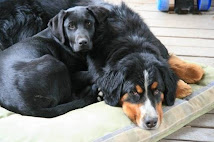
from Don Surber.com
April 29, 2009
AP: “The jobless rate is now at a quarter-century high of 8.5% and is expected to hit 10% by the end of this year…
“…It will probably rise a bit higher in early 2010 before starting to slowly drift downward. Still, the Fed predicts unemployment will stay elevated into 2011, and economists don’t think it will return to normal — around a 5 percent jobless rate — until 2013.”
Hope. Change. Hope the change don’t kill the economy.
I thought the $787 billion stimulus package, passed with only two Republican votes, was supposed to cure all this.
President Obama said we had to quadruple the national deficit in order to save our economy.
And yet, Jeanine Aversa of the AP reported:
1. The economy dropped at a pace of 6.1% in the first quarter — worse than the 5% that was expected.
2. Unemployment is at 8.5%, its highest in a quarter-century.
3. Spending on home building fell 38%, the biggest drop in 29 years.
4. Businesses cut spending on equipment and software by 33.8% — the biggest drop in capital spending in 51 years.
5. U.S. exports plunged 30% — the worst first quarter in 40 years.
Aversa: “Even if the recession were to end this year, the economy will remain feeble and unemployment will keep climbing, government officials and analysts say.”
Democrats wanted a recession. Here it is.
Click to read the article and comments
Here is the AP article
from CTcentral.com
by JEANNINE AVERSA
AP Economics Writer
April 29, 2009
WASHINGTON (AP) -- The economy shrank at a worse-than-expected 6.1 percent pace at the start of this year as sharp cutbacks by businesses and the biggest drop in U.S. exports in 40 years overwhelmed a rebound in consumer spending.
The Commerce Department's report, released Wednesday, dashed hopes that the recession's grip on the country loosened in the first quarter. Economists surveyed by Thomson Reuters expected a 5 percent annualized decline.
Instead, the economy ended up performing nearly as bad as it had in the final three months of last year when it logged the worst slide in a quarter-century, contracting at a 6.3 percent pace. Nervous consumers played a prominent role in that dismal showing as they ratcheted back spending in the face of rising unemployment, falling home values and shrinking nest eggs.
In the January-March quarter consumers came back to life, boosting their spending after two straight quarters of reductions. The 2.2 percent growth rate was the strongest in two years.
Still, the consumer rebound was swamped by heavy spending cuts in virtually every other area.
Businesses cut spending on home building, commercial construction, equipment and software, and inventories of goods. Sales of U.S. goods to foreign buyers plunged as they retrenched in the face of economic troubles in their own countries. Even the government trimmed spending. It was the first time that happened since the end of 2005.
The sharp cuts underscore the toll the housing, credit and financial crises - the worst since the 1930s - are having on the country. The recession, which began in December 2007, has taken a big bite out of national economic activity and snatched 5.1 million jobs.
However, the recent outbreak of the swine flu, which started out in Mexico and has spread to the United States and elsewhere, poses a new potential danger. If the flu stifles trade and forces consumers to cut back further, those negative forces would worsen the recession.
Before the flu outbreak, Fed Chairman Ben Bernanke said the recession could end this year if the government succeeds in stabilizing the shaky financial system and getting banks to lend again.
In recent weeks, Bernanke and his colleagues had cited "tentative signs" of the recession easing in some consumer spending, home building and other reports. Finance officials from the U.S. and other top economic powers meeting here last week also saw some hopeful signs for the global economy.
Spending on home building fell at a 38 percent annualized rate, the most since the second quarter of 1980. Businesses cut spending on equipment and software at a 33.8 percent pace, the most since the first quarter of 1958. Inventory reductions shaved 2.79 percentage points off overall first-quarter economic activity.
U.S. exports plunged at a rate of 30 percent, the biggest drop since the first quarter of 1969, reflecting the crimped appetite of struggling foreign buyers. The government also cut spending 3.9 percent, the most since the end of 1995.
Even if the recession were to end this year, the economy will remain feeble and unemployment will keep climbing, government officials and analysts say.
The jobless rate is now at a quarter-century high of 8.5 percent and is expected to hit 10 percent by the end of this year. It will probably rise a bit higher in early 2010 before starting to slowly drift downward. Still, the Fed predicts unemployment will stay elevated into 2011, and economists don't think it will return to normal - around a 5 percent jobless rate - until 2013.
Click to read the rest of the article





No comments:
Post a Comment